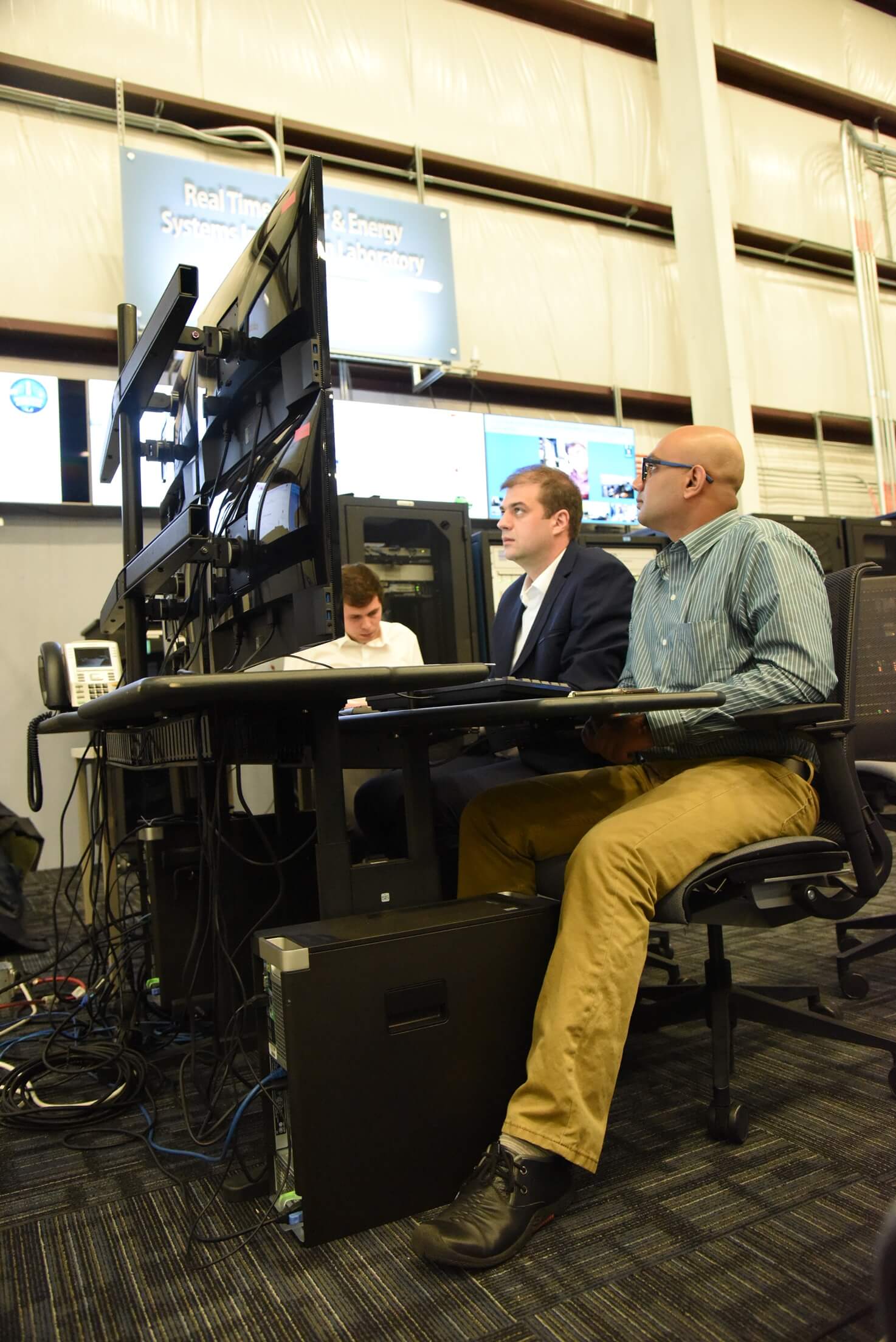For an idea of how researchers at Idaho National Laboratory envision the power distribution system of the future, take a look at large information distribution systems: the internet, of course, but perhaps telephone communications even more.
At the beginning of the 20th century, telecoms were small and highly localized. By mid-century, the nationwide Bell System had evolved, but an overseas call would still cost a bundle. Today, inexpensive intercontinental telecommunications are the norm.
In September, a group of INL researchers hosted a live demonstration of the Global Real-Time Super Lab, linking three national labs and five universities in the United States and Europe for a simulation to study how electricity can be distributed across vast distances to maintain stability and address disruptions.
The concept is to distribute electrons over transmission wires the same way digital packets of zeros and ones are sent over the internet. Power systems around the world are undergoing fundamental transitions to achieve long-term sustainability, reliability and affordability. The ability to move electricity around the globe rather than only within isolated networks holds the possibility of vast savings on infrastructure and energy consumption.
Starting around 10:30 a.m., researchers from Idaho Falls to Albuquerque, New Mexico, to Columbia, South Carolina, to Aachen, Germany, and Turin, Italy, began linking their grid research systems. Numerous partners contributed real-time simulators that simulate how large-scale electricity systems act in the real world. Contributions also included simulated diverse set of energy sources and components such as wind energy, solar energy, storage systems, microgrids, and dozens of electric vehicles. Then, the team ran a simulated disruption based on a natural disaster such as hurricane to assess how the power grid can be stabilized.

“We hit a home run today,” said Rob Hovsapian, manager for INL’s Energy Systems & Technologies Division. “This gives us global credibility.” In addition to having DOE officials for an audience, the demonstration was seen in Torino by participants at IEEE’s Innovative Smart Grid Technologies conference (ISGT-Europe).
The demonstration was the culmination of four years of work that dates back to joint research between INL and the U.S. Department of Energy’s National Renewable Energy Laboratory (NREL) in Golden, Colorado. Researchers at Sandia National Laboratories and five universities joined INL to explore the idea that electrons can be sent around the world to prevent large-scale blackouts that could be caused by natural and man-made disasters. Participants contributed specific capabilities:
- Sandia National Laboratories: Distributed Energy Technologies Laboratory
- Colorado State University: High-performance computer-based energy management system
- Washington State University: Smart Grid and Microgrid Laboratory
- University of South Carolina: Integrated Grids Laboratory (InteGraL)
- RWTH Aachen University: Co-simulation framework
- Polytechnic University of Turin: High-performance computer-based Energy Management System
- NREL: Energy Systems Integration Facility
- INL: Power and Energy Real-Time Laboratory
Beyond the obvious benefits of connecting technology, the project brings people from across the country and around the globe onto the same team. In addition to the several papers they have published, Marija Stevic, a graduate student at RWTH Aachen, is using the project to support her doctoral dissertation. Stevic benefited from a “12-month Ph.D. internship” program that allowed her to spend more than a year at INL contributing to the research program. The RT Super Lab will provide a platform for other participants to pursue similar long-term exchange activities.
“We are hoping this is a game-changer,” said INL’s Manish Mohanpurkar, group lead of the energy systems research group. Each lab that participated in the demonstration funded its own participation, and INL’s portion was part of an internally funded Lab-Directed Research & Development project. With connections firmly established between the participants, the continued sharing of information and resources will allow researchers to learn more about such issues as data latency and instability.
Building on what was learned at the first RT-Super Lab demonstration, Hovsapian said he is hopeful that partnering laboratories in Asia, South America and Australia may eventually opt in.
Read media coverage of this project from IEEE Spectrum.





